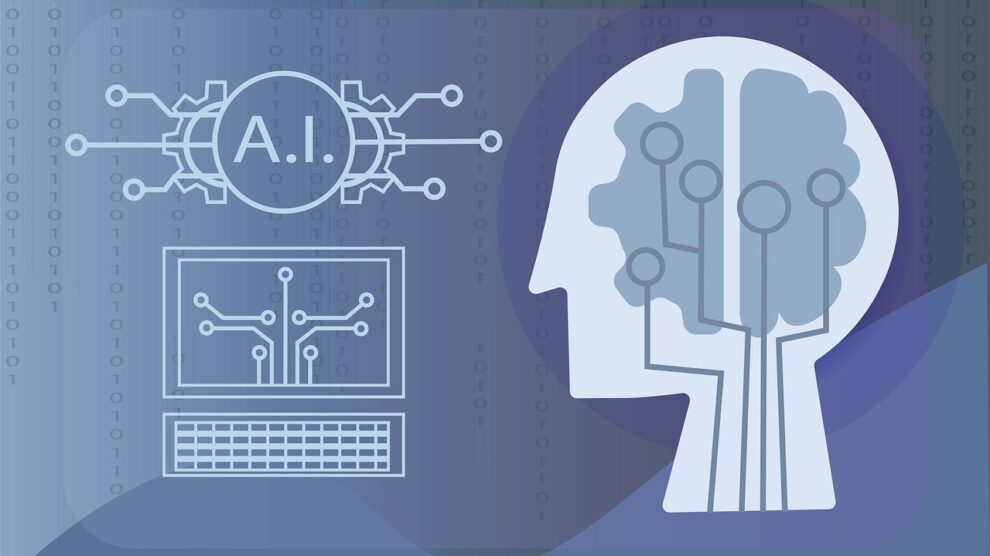The pandemic brought technological, logistical, and economic challenges for companies globally, leaving them scrambling to adapt. Amidst the chaos, organizations turned to video conferencing platforms such as Google Meet, Microsoft Teams, and Zoom to stay connected.
New-gen technologies like Artificial Intelligence (AI) and Machine Learning (ML) supplemented human efforts to take on everything from health to education. Likewise, businesses looked toward these next-gen technologies to remain agile during the uncertain industry shifts.
We also use AI/ML applications in some way or the other. You automatically use Artificial Intelligence features while starting the day with smartphones. It can be unlocked without entering any passwords or pins, via biometric identification such as fingerprints, iris, or facial recognition. Also, there is an option to unlock the smartphone device using a pattern controlled by AI.
After that, you open up other apps like YouTube. Its recommendation system uses AI to provide the most appropriate content that best suits you. The autocomplete features and relevant search results you get while browsing the web are AI-driven.
Take another case in point, if you make a mistake when texting someone, the errors are auto-corrected many times—you know whom to thank. But have you wondered what fuels these AI and ML applications that we use in some way or the other? If not, we are here to answer. Data Annotation is the process that fuels these applications.
Get the Basics Cleared
For AI/ML-based applications to make sense of data requires supervised training. They have to be taught using properly labeled datasets that help them detect, identify, and classify different things in their environment. So, data annotation is the process of adding tags and labels to the input datasets that are to be fed into AI/ML models.
Just like a child is taught what a tree is, smart models have to be taught what a tree is. They have to be fed with accurately labeled datasets that show what a tree is. You also have to teach them which is not a ‘tree’. But if you want the smart model to distinguish between the types of trees, you’ll have to tell them what the different varieties of trees are. Then only it is possible for the AI/ML model to classify if it is a neem tree or a fir tree.
In simple words, AI and ML learn through examples just as the human brain does. Whether it is a Natural Language Processing (NLP) model or a computer vision-based model (CV), data annotation is the process that accelerates them all. Accurately tagged datasets help the machine learning algorithms to learn, evolve, and efficiently perform the tasks they are designed for.
Wonders of AI
Businesses of different sizes are adopting AI and ML globally since it holds immense potential. The survey findings of McKinsey Report: The State of AI in 2021 are “The business functions where AI adoption is most common are service operations, product and service development, and marketing and sales, though the most popular use cases span a range of functions.”
Here’s a list of some amazing applications of AI and ML in different industries and how data annotation fuels those applications:
Healthcare
AI paired with ML finds many use cases in the healthcare landscape and it is better to say AI is a boon for the healthcare sector. Medical images like X-Ray, CT, MRI, Ultrasound, and PET scans are labeled accurately to train the machine learning model. These medical annotated datasets help smart models to learn from previous cases and make predictions about new unlabeled images. This assists healthcare professionals to diagnose different types of diseases such as infections or cancers. Link detection between genetic codes, faster drug discovery, and dental imaging, bone fracture detection is also possible through this.
Retail
AI is expanding virtually and the retail sector is no exception to it. Retailers can boost efficiency via smart inventory management, automated warehouses, and attribute mining without increasing their operational costs. To deliver an elevated customer experience, retailers use AI throughout their product and service cycle—from manufacturing to after-sales customer service interactions and everything in between. The customers experience a great level of comfort through self-checkouts, personalized shopping through product recommendations, visual search enhancement, and so on. This also impacts their current sales and generates greater profits.
Ecommerce
AI/ML has impacted the ecommerce sector significantly. The stakeholders get to know their customers better by evaluating them according to their shopping patterns, preferred products, payment modes used, etc.
Businesses can also personalize shopping recommendations for their customers and detect fake reviews using Natural Language Processors (NLP) models. This improves their annual results and increases ROI. Other advanced features like chatbots, automated customer service, visual product search, and voice search features, all powered by data annotation can also be integrated into their platforms to deliver an elevated user experience.
Finance
Leaders in the finance industry use Artificial Intelligence and Machine Learning to improve customer acquisition and retention, increase revenue generation, enhance customer relations, and better risk management.
Virtual assistants or AI-powered chatbots can work round the clock and help deal with consumer queries much more efficiently. They can also up and cross-sell products to existing customers with intelligent conversations, provide multiple buying options, and eventually, create 24*7 available sales channels for businesses.
Education
Optical Character Recognition (OCR) is one of the amazing real-world applications of AI. The MCQ answer sheets in school/college days were analyzed using these devices. Next-gen technologies like artificial neural networks offer a dynamic experience and help the students to enjoy what they are studying.
Natural Language Processing (NLP) is another wonder of annotation in machine learning. Using the NLP-based models, students can easily translate their course material from one language to another. As a result, the language barrier is removed and the subject matters and course contents become easily accessible to a wide range of students who can enormously benefit from these.
Final Thoughts
AI/ML-based applications powered by the data annotation process are revolutionizing businesses across different industries and verticals. The data sourced from McKinsey Report: The State of AI in 2021 well supports this statement. “Findings from the 2021 survey indicate that AI adoption is continuing its steady rise: 56 percent of all respondent’s report AI adoption in at least one function, up from 50 percent in 2020.”
So, to be a part of this new-age revolution, companies need data support for AI and ML. consulting professionals or collaborating with experienced companies can help you get high-quality labeled datasets consistently. So, this is the right time to act!





